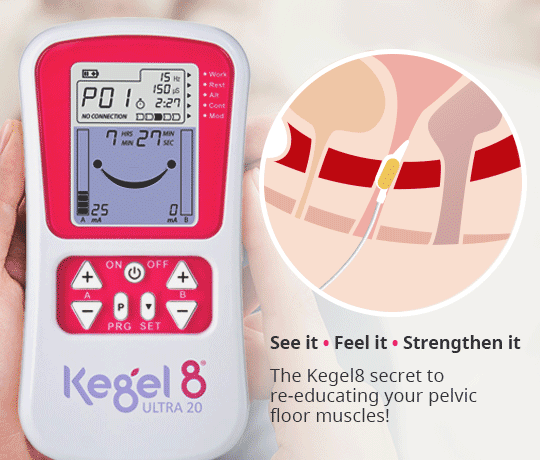
Pelvic Organ Prolapse and pelvic floor damage can be a significant issue for many individuals, particularly women who have given birth or people who have experienced certain medical conditions. Early research findings from clinical trials on a muscle-healing gel could offer new choices in treating pelvic floor damage. It could be a game-changer for patients and healthcare providers alike.
Reported as a "very early study" indicating this research is in its early stages the injectable muscle gel has been tested in rodents. Tissue samples were taken from the pelvic floor muscles of cisgender women who’d give birth vaginally and subsequently developed symptoms of pelvic organ prolapse. These tissue samples were compared with similar samples from women who had no pelvic organ prolapse. The POP samples from the mothers with prolapse were significantly thinner.
Researchers developing the pelvic organ strengthening gel say that once it is injected into the pelvic organ muscles it solidifies and forms a structure that resembles muscles. The body then works to dissolve it and releases substances that attract immune cells that help repair the damaged pelvic organ tissue.
While this research is still in its early stages, and this is great news for advancing pelvic organ prolapse treatment. In the meantime, with technology and treatments like this being so far in the future what can you do today to treat pelvic floor damage and prolapse?
Pelvic floor exercises (Kegel exercises): These exercises aim to strengthen the pelvic floor muscles, which can help improve symptoms and support the surrounding structures. Kegel exercises are particularly beneficial for conditions like stress urinary incontinence.
Physical therapy: Pelvic floor physiotherapy involves specialized exercises and techniques to address pelvic floor dysfunction and related issues. POGP Physical therapists can work with patients to improve muscle tone, flexibility, and coordination in the pelvic floor. Information about how to find a POGP Physiotherapist in the UK below.
Constipation – Treat it, avoid it. The pressure put on the pelvic floor muscles cause stain on an already weakened pelvic floor. Use a Go Better Squat toilet stool to have an easier, more complete bowel movement. Dietary changes, such as increasing fibre intake, staying hydrated, and engaging in regular activity.
Medications: In some cases, medications may be prescribed to manage symptoms related to pelvic floor disorders. For example, medications may be used to treat overactive bladder or relieve pain associated with certain conditions.
Biofeedback: This therapy involves using sensors and feedback devices to help patients become more aware of their pelvic floor muscle function and learn how to control them effectively. The Kegel8 Pelvic Trainer gives biofeedback and has a ‘Squeeze Scale', the user squeezes and is able to measure and monitor the strength of the pelvic floor muscles – essential in any muscle training programme.
Pessaries: A pessary is a device inserted into the vagina to support pelvic organs and manage symptoms of pelvic organ prolapse and or stress urinary incontinence. We urge all women to consider using a pessary, so they manage the prolapse and stop it getting worse. An example of a home use pessary for prolapse is the Cube Pessary. A bladder control pessary can also be used to strop Stress Urinary Incontinence – invaluable for runners and sports women who leak.
Minimally invasive procedures - Some cases of pelvic floor damage may require surgical intervention. Laparoscopic or robotic surgery can be used to repair damaged tissues and support pelvic organs.
Surgical repairs: For more severe cases of pelvic floor damage, traditional open surgery may be necessary to repair and reconstruct damaged pelvic structures. There is a Condition Guide to help with a 12 week rehabilitation course following pelvic surgery written by Physio Amanda Savage included with every Kegel8 Ultra 20 v2.
If you have a pelvic organ prolapse or weak pelvic floor muscles Kegel8 Ultra 20 v2 will help strengthen and thicken the muscles of the pelvic floor to help you manage the symptoms of prolapse. If we can help you with your Kegel8 pelvic toner questions please do Book a Call and speak with one of our trained advisers.
Clinical References
Proregenerative extracellular matrix hydrogel mitigates pathological alterations of pelvic skeletal muscles after birth injury. Science Translational Medicine 2nd August 2023
https://www.science.org/doi/10.1126/scitranslmed.abj3138
Find a POGP Pelvic, Obstetric & Gynaecological Physiotherapy Clinician in the UK. https://thepogp.co.uk/patients/physiotherapists/





